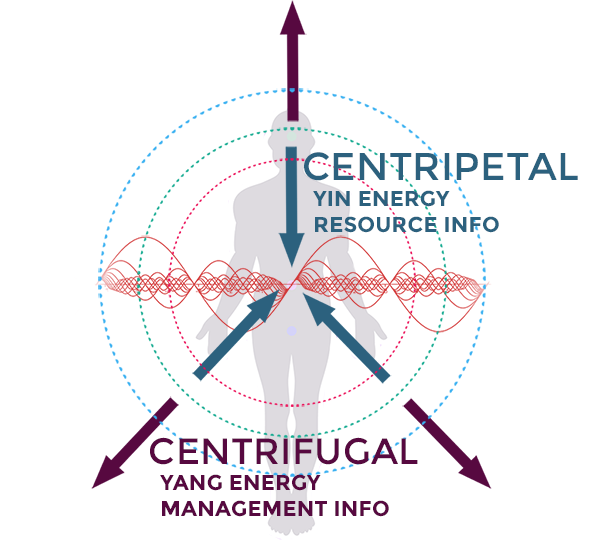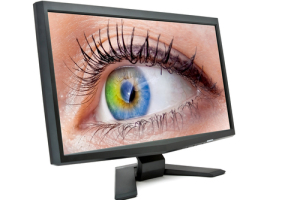The Limitations of Computerized Medical Diagnostic Systems
Computers and medicine seem like a perfect union. With current technological advances, it is no longer far-fetched to have Star Trek-like hand-held health scanners that can accurately diagnose a patient and identify all dysfunctions with the push of a button. IBM has placed great efforts to advance cognitive computing as applied to the medical field with it’s prized Watson, a cognitive technology that processes information more like a human than a computer. Hopes are that Watson will help speed scientific discovery in the medical field, by scanning large volumes of literature and data far more quickly than humans can and suggesting possible leads. But are computers really the answer to improved patient care and improved results?
Computer Systems in the Integrative Medical Field

Over the past decade, an explosion of computerized diagnostic systems has hit the integrative/alternative medical field. These include electrodermal / EAV (electroacupuncture according to Vol) testing systems, autonomic nervous system assessment systems, heart rate variability scanning systems, and biofeedback analysis systems among others. The purpose of most of these computerized systems is to interact with the body, whether through electronic impulses (galvanic skin response) or through the variation in the heartbeat intervals, and quickly and efficiently retrieve information about the patient and their current state of health.
These computerized systems have the ability to scan a great deal of health-related parameters in a very short span of time, and greatly improves a practitioner’s ability to make decisions based on the readings provided – often in comparison to a baseline or healthy reading. With all this information at the disposal of a practitioner, one would expect a significant improvement in patient results through the use of computerized medical diagnostic systems. But as more and more computerized systems hit the shelves of doctors’ offices, it’s becoming clear that something is still missing…patient’s still are not seeing a complete restoration of their health, even after the use of these advanced computer systems. And today, with the improved understanding of quantum physics, energy, and information, we can now see that the limitations of computers don’t lie in the amount of information it can assess, but the quality and type of information it is assessing.
Two Important Types of Information
Proper functioning of any organism is dependant on 2 forces – centripetal energy (or in Traditional Chinese Medicine known as Yin energy) and centrifugal energy (in TCM known as Yang energy). Another way of referring to these two energies is as fields of information. These two informational energy fields are:
-
Management information
corresponding to Yang centrifugal energy; outward-moving information fields that are of a lower frequency, and related to symptomatic problems within the body. -
Resource information
corresponding to Yin centripetal energy; inward moving information fields that are a higher frequency, and related to underlying dysfunctions in the body.

These two fields of information provide a comprehensive and complete understanding of a patient’s state of health. Without them, we do not have a complete picture of what is going on, only a half-filled jigsaw puzzle. Computer systems are limited to only accessing and scanning management information, the information that is outward and symptomatic based. In this respect, through any computer system, the jigsaw puzzle relating to a patient’s health is only half complete, where the outside “symptomatic” pieces are presented but the centerpieces are missing. This leaves many questions as to what a practitioner is actually looking at and how to proceed with treatment.
The Missing Link: Resource Information – Centripetal Yin Energy
To understand the importance of resource information (centripetal yin energy), let us show a quick example of what happens during analysis with a computerized system.

A patient is seated and connected to the computerized medical diagnostic system in any number of forms, and a scan is begun. The amount of information retrieved is dependent on the system as well as the type of scan performed, but regardless some information is relayed to the practitioner. In this instance, the computer system notifies the practitioner that there is a disturbance located in the eye of the patient. The patient may confirm this as they have experienced some discomfort and blurred vision. The computerized system has done its job, and the practitioner may prescribe a medicine or therapy dedicated to improving eye function. But a large piece of critical information is missing.
That the eye is experiencing symptomatic issues is in direct relation to management information – it shows how the body is managing a problem. This is merely a symptom of some deeper underlying dysfunction. The underlying dysfunction may be a localized infection or degenerative process in this case, yet without this information, which is related to resource information, a practitioner is working off limited information to try and treat the dysfunctioning eye.
By accessing both the management and resource information, not only can a practitioner accurately identify that there is an issue in the eye of the patient, but what is causing that problem in the eye. With this information that no current computer can access, personalized treatment is greatly improved and both resolutions of the problem and elimination of the underlying dysfunction can be achieved with greater efficiency.
In this video, Dr. Thomas K. Szulc, MD (Medical Director of the New York Center for Innovative Medicine), discusses the importance of both resource and management information.
Accessing Both Fields of Information
Now that we’ve addressed the limitations of computerized medical diagnostic systems in assessing quality information, the question remains, how do we access both the resource and management information of patients to provide the best and most effective treatment. Fortunately, there are medical solutions currently available that allow for a comprehensive assessment of both fields of information.
One such advanced medical system outside of the computerized spectrum is Bioresonance Analysis of Health (B.A.H.). The highly organized system utilizes a Lecher Instrument as a quantum-based tool used for the qualitative detection of the energy field’s interactions. Through the B.A.H. system, a practitioner is able to run a complete health assessment that accurately identifies a great number of pertinent health parameters using both management and resource information. All underlying dysfunctions, not just symptoms, maybe scanned through the system. In addition, this system allows a practitioner to go much further in personalizing a program of treatment to the patient that is highly specific, down to dosage of medicines and frequency/prioritization of treatments and therapies.
The post The Limitations of Computerized Medical Diagnostic Systems appeared first on Innovative Medicine.
See how we can help you restore complete health of body, mind & spirit.
Lorem ipsum dolor sit amet, consectetur adipiscing elit, sed do eiusmod tempor incididunt ut labore et